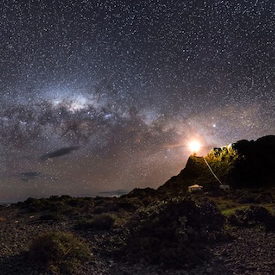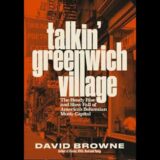 The Future History. Heinlein’s writing aid, made famous when published by Campbell in Astounding Science Fiction, was the first such widely dissseminated, but not the first science fiction to incorporate a coherent, sequential presentation of what the future might look like. That honor probably goes to Stapledon’s Last and First Men, a “future history” of mankind (1930).
The Future History. Heinlein’s writing aid, made famous when published by Campbell in Astounding Science Fiction, was the first such widely dissseminated, but not the first science fiction to incorporate a coherent, sequential presentation of what the future might look like. That honor probably goes to Stapledon’s Last and First Men, a “future history” of mankind (1930).
Heinlein was certainly not the only author working within a formal framework (or at least an outline) that incorporated major (future) historical events; any science fiction author utilizing the concepts of world-building would have to engage with history to at least a minimal degree as no story takes place in a vacuum (well, you know what I mean); things happened before the story. It’s not at all surprising that with so much science fiction based on past history (Foundation series based, in part, on the history of the Roman Empire; untold stories incorporating feudalism, time-travel into the past, alternate history tales) that authors would turn in the opposite direction and build a history of the future.
At some point I believe it would be extremely instructive to take a deep look into the close relationship between science fiction and the study of history – that time is not now – though I think it begins with the need for a solid foundation from which to extrapolate.
No, today, merely a mention of Future Histories and their close companion – reading order lists. Some authors don’t write their future histories in order (and some publishing houses don’t publish them in order), so fans and readers – list lovers all – have turned to complimenting the published and implied future histories of their favorite authors with sequential title lists, helping newcomers find their way. (There’ve been quite a number of series that have prompted re-reads “in the proper order”, and I’m sure I’m not the only one to have engaged in that particular practice.)
Among the more well-known Future Histories we find:
Jerry Pournelle’s Co-Dominion – a cold-war era based future history that eventually arrives at the Niven & Pournelle classic The Mote in God’s Eye
Niven’s own Known Space history that incorporates numerous shorts and novels
Heinlein’s aformentioned
Le Guin’s Hainish Cycle
Asimov’s Foundation (expanded to include the Robot stories)
MacCaffrey’s Pern series
Piper’s Terro-Human future history (Fuzzies! Space Vikings! Planets for Texans!)
Cordwainer Smith’s Instrumentality of Mankind
A. Bertram Chandler’s Rim Worlds/John Grimes stories
Cherryh’s Union-Alliance series
Dickson’s Childe Cycle
McMaster Bujold’s Miles Vorkosigan series
Herbert’s Dune series
Butler’s Patternist series
Doc Smith’s Lensman series
Foster’s Humanx Commonwealth
Anderson’s Psychotechnic League
and more.
You’ll find lots of links on the SF Chronology page











Recent Comments